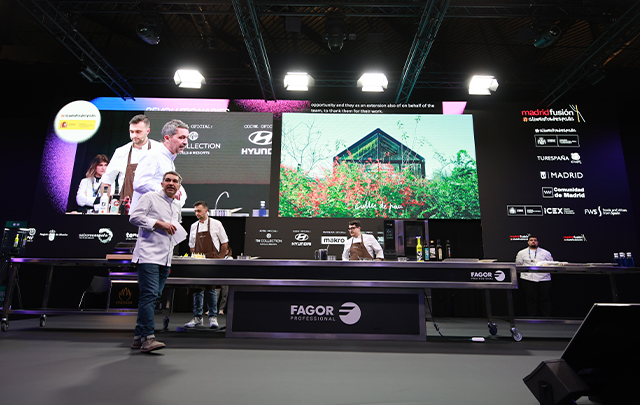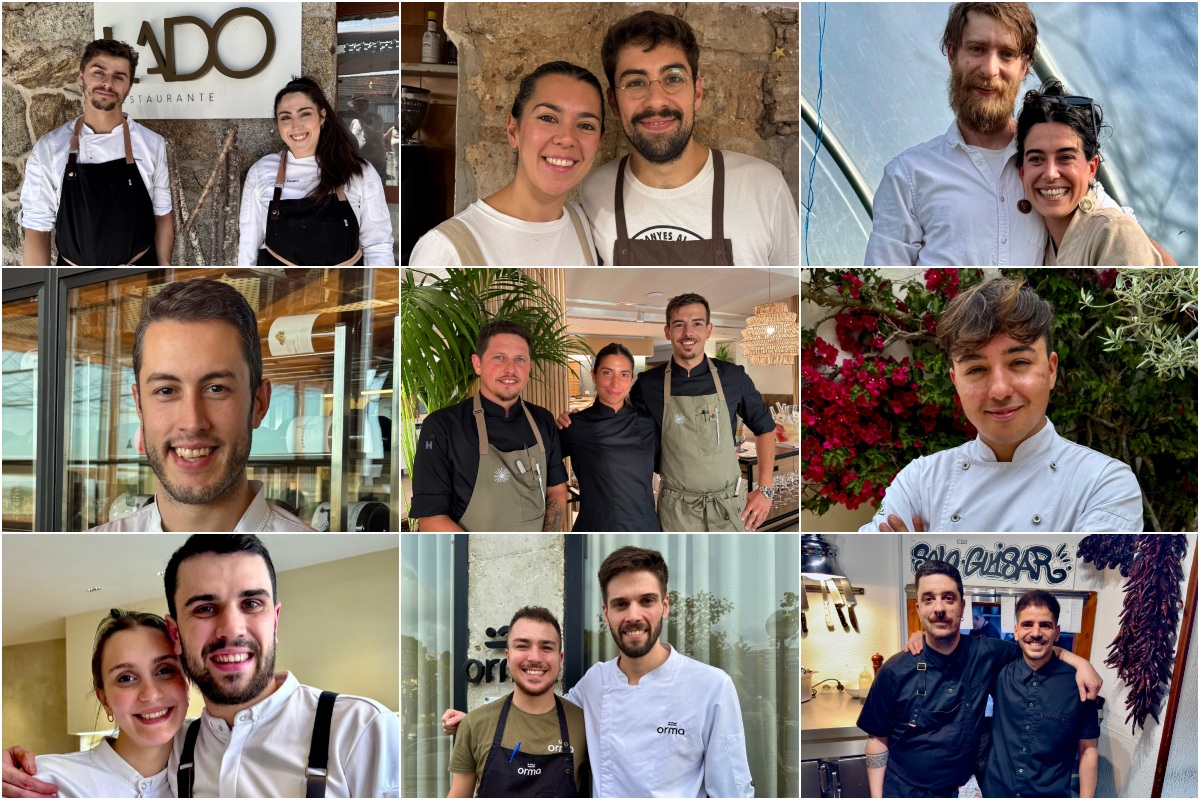News
From the landscape to the table, a gastronomic commitment to the rhythm of nature

At the O Grove restaurant, where everything is cooked with local produce, they work intensively with black oats, a Galician product that feeds the whole world without people knowing its characteristics
Javier Olleros practices a cuisine of proximity, but in a natural and intuitive way. A way of doing things that comes from the environment itself and that the chef transfers to his dishes like a painting that represents the landscape of O Grove. A way of cooking that led him to win the Revelation Award at Madrid Fusion just eight months after opening. But in this edition of Madrid Fusion, the chef highlighted the grains and seeds of their land, using them to cook dishes like natural paintings.
Specifically, in a talk in which he made a direct appeal to hospitals to promote health and nutrition through their kitchens, he wanted to emphasize the value of black oats, an ingredient that seems minor but has great potential. "It has an important value not only in the field, but cereals like oats are very resistant to sudden climate changes."
A cereal native to Galicia that, as he explained, feeds the whole world. Despite this, no one knows the properties of this food, which has great nutritional value. He found it, however, in this search that Olleros made in a small village that at first he thought would bore him, but now, over the years, he continues to discover "wonderful" things of nature that he later uses to prepare some of his dishes. A nature that he tries to capture for his guests at a time, he says, when it is increasingly difficult to find the truth.
Dishes that they create season after season, without neglecting the representation of their territory. A "fascinating creative stimulus" that comes from O Grove and that allows them to be what they have achieved through the plants and skeletons of the environment. "For our dishes there must be harmony and meaning.When we use a leaf, we have to know the characteristics of that product, we have to know what happens and what stands out when the product is eaten. We don't want anything to stand out," he says of a dish made with different Galician vegetables.
With the dishes made with local products, they are aware that the customer will have a full spoonful of flavors each time they try the dish. All this in a restaurant that tries to extend the life of the product as much as possible through the reuse and production of oils.
A 360º dining room
He is not a chef, so he did not come to talk about cooking. But Senén Barral, Head of Innovation, Infrastructure and Catering Services at Inditex, came to Madrid Fusion to highlight the Inditex canteens, where they serve one and a half million meals a year to their employees, for which they launched a strategy in 2016 to provide the best service, always thinking about the environment and local producers. In this way, they went from spending 300 thousand euros in the first years to spending nine million euros on local products, with 85% of the purchases of these canteens coming from Galician companies.
They have a captive clientele, who in January know how many meals they will have until December, so they consider it essential to talk to suppliers who are committed to regenerative agriculture and use. That's why they're not buying the best looking product, they're looking at the ins and outs of the orchards and buying the ugly and imperfect product that tastes the same. "We want to revalue that product, it's just uglier, but it's the same," says Barral. A way to make use of a lot of products that would otherwise end up in the trash. Something they also apply when transferring products from the store to the dining room. There is no point in buying from the local producer and over-packaging the food," he said, before assuring that it saves costs and results in the best quality product: everything is natural and local.
Zero waste
A Serbian, a Portuguese and a Catalan. It sounds like a joke, but it turned out to be something quite different. A restaurant in Helsinki, Finland, recognized with several international awards for its "zero waste" project. But in this restaurant, Nolla, by Albert Franch, Luka Balac and Carlos Henriques, the food is more important than the story. Although they pay a lot of attention to appearance, not only in the preparation of their dishes, but also in terms of aesthetics and sustainable care in the restaurant. An open business where they do not use products that arrive in disposable packaging. In fact, the first myth of sustainability was dispelled when they counted the number of guests they served each night. Around 100 customers, although these types of places tend to be smaller.
But the truth is that even if there are 100 people, the chairs are made from materials that will never die, so they will never create waste; the glasses are made from old soft drink bottles, and the flower vases are the ones that the brands can't sell because they have some kind of defect. But the napkins are made from fabric scraps, and the plates on which the food is served are either used, made without electricity, or made from recycled ceramics.
Nolla's model, which strives for total sustainability in a restaurant that does not consume food that comes from more than 250 kilometers from the restaurant's door, is quite an achievement. "We didn't want to expand any further because of all the invisible waste generated during transportation and, above all, because we want to support the local economy," say the chefs, who thus prepare natural dishes in a sustainable way, thinking locally and knowing where each of their products comes from.


